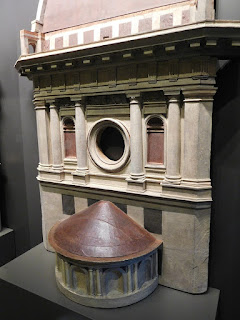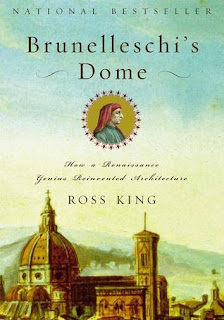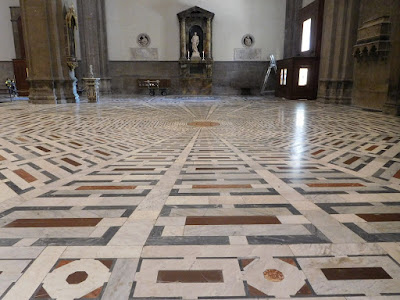In June this year I was invited to
Florence to give a paper, entitled ‘Colonial Science beyond Imperial Borders: Early Twentieth Century Scientific Networks on the Sino-Tibetan Frontier’ at a two day seminar organised by the Department
of History at the European University Institute. The seminar took place in the
Villa Scarlati, set in its beautiful grounds in the hills of Fiesole, just a
short bus ride out of town from the centre of Florence. It was an excellent
seminar which examined many non-traditional aspects of imperial history,
challenging many of the concepts of empire and imperial expansion, looking
beyond the normal boundaries of more familiar colonial realms and territories.
I met many academics and fellow PhD students from many different countries,
making good connections and finding plenty of interesting food for thought in
relation to my own research. It was wonderful too, to be back in Florence once
again.
Florence is one of the most magical
cities in the world. I never thought I’d end up becoming so attached to the
place, let alone so familiar with it. The first time I visited was in the
winter of 2003. I stayed two nights while working at the Pitti Palace Museum.
On that particular visit I didn’t have much time to explore. Working by day meant
I only got the chance to wander round the empty streets after dark when
everything was shut, but this was more than enough of a taster to whet my
appetite. I became enchanted by the place. At the end of that trip, when I left
Florence in the pouring rain, looking out of the rain streaked taxi window I
knew I’d have to come back and explore properly one day.
Nearly ten years later I did
return. It was August 2012, and every day was drenched in sunshine and heat –
but this didn’t put me off exploring the city until I was footsore. A central
part of this trip was a growing fascination with the incredible architecture of
the magnificent Duomo, and the role of the architect, Filippo Brunelleschi in
particular. Reading Ross King’s excellent book, Brunelleschi’s Dome (Penguin, 2000), at the time, I set out to
explore every inch of the enormous cathedral (you can read more about that trip
here). For me, Brunelleschi is but one facet of a long-standing fascination
with the Renaissance and the history of science which flourished in the city
state of Florence. Art and engineering, anatomy and painting, architecture and
astronomy – all of these subjects uniquely combined in the confluence of this
place at that particular time; it’s no mere hyperbole to say that the remarkable
flow of knowledge and ideas which emanated from Florence has shaped the world
we continue to live in to this very day. I’ve long been fascinated by the vast,
encyclopaedic interleaving of different disciplines which were personified in
so many of the city’s most famous citizens: Leonardo da Vinci, Michelangelo,
Galileo, Dante, Donatello, Giotto, Amerigo Vespucci, and Leon Alberti Battista.
My interest in all this probably
began with a visit to an exhibition about Leonardo da Vinci at the Hayward
Gallery in London in the late 1980s, when I was aged about 12 years old. The
exhibition focussed on Leonardo as a scientist and engineer. I was particularly
struck by two aspects of Leonardo’s scientific work: his studies of human
anatomy (you can read more about that here), and his invention of many remarkable machines. The exhibition comprised a mix of his original drawings
set alongside working models based upon his plans with detailed explanations of
his ideas. Many of the machines he’d dreamt up were purely theoretical, such as
his famous birdman flying machine and corkscrew helicopter. Of course, most of
these machines would never have got off the ground and remained simply as pure
flights of Leonardo’s fancy – entirely impractical given the available
materials and technologies of the time – there is no record that anyone ever
attempted to construct any of them for real.
But some were genuinely practical.
He specialised in hydraulic engineering as well as military architecture, and it
is known that he was engaged or advised on some projects of this kind alongside
his better known artistic commissions – Charles Nicholl’s life of Leonardo,
titled Leonardo da Vinci: The Flights of the Mind (Penguin, 2004), is a fascinating read, and in this respect really
brings Leonardo to life as a working man. His design for an armoured vehicle, a
kind of prototype-tank, was one drawing featured in the exhibition which stuck
in my mind. This particular drawing had been lent to the Hayward by the British
Museum, and many years later I was lucky enough to hold this very same drawing in
my own hands after I began working at the BM – in fact I’ve couriered and
installed it in several other exhibitions in different parts of the world and I
hope it has exerted the same fascination for visitors (young and old alike) to
those exhibitions too.
It has been speculated that
Leonardo’s fascination with machines may well have begun when he was a child,
as he would undoubtedly have seen – first-hand, on a daily basis – the enormous
scaffolds, cranes, pulleys and winch systems which were created to build the magnificent
Duomo. It’s easy to picture Leonardo as a young boy watching these amazing
machines in action, and it’s not hard to imagine the kind of impression they
might have made upon him. He must have been fascinated.
And for architectural historians
that fascination has never faded. The question as to how Brunelleschi put his
ideas into action, particularly with regard to the building of the great dome,
with its innovative self-supporting brickwork and double-shell design, is something
that deeply intrigues modern scholars too. In this respect Brunelleschi’s
machines as much as his innovative architectural ideas are an equally
fascinating thing to contemplate. Remnants of these machines still exist, along
with sundry descriptions and financial records found in the Duomo’s archives;
these disparate fragments have been the subject of modern studies – such as the
book by Ross King, which I’ve already mentioned. On this recent trip I bought
myself another, slightly more technical book on this topic: Brunelleschi: Studies of His Technology and Inventions by Frank D. Prager & Gustina Scaglia (Dover, 2004 [first
published by MIT Press, 1970]). On my previous trip in 2012 I somehow ran out of
time, and so I hadn’t been able to visit the little museum at the back of the
Duomo which houses the original models Brunelleschi made when designing the
dome.
 This time I made sure I didn’t miss it. I also had a better camera with
me on this summer’s trip, and so as an addendum to the previous Waymarks post which I wrote on the
building of the dome, these are some better photos of the Duomo and
Brunelleschi’s working models, as well as the final resting place of the great
man himself, set beneath the marvellous marble floor with its intricately tiled optical illusions – it’s a magnificent building, and one which I don’t think
I’ll ever get tired of exploring ... Perhaps, when I complete my PhD I should
think about applying for a Post-Doc fellowship at the EUI and get to know
Florence even better?
This time I made sure I didn’t miss it. I also had a better camera with
me on this summer’s trip, and so as an addendum to the previous Waymarks post which I wrote on the
building of the dome, these are some better photos of the Duomo and
Brunelleschi’s working models, as well as the final resting place of the great
man himself, set beneath the marvellous marble floor with its intricately tiled optical illusions – it’s a magnificent building, and one which I don’t think
I’ll ever get tired of exploring ... Perhaps, when I complete my PhD I should
think about applying for a Post-Doc fellowship at the EUI and get to know
Florence even better?
Also on 'Waymarks'



























No comments:
Post a Comment
Comments do not appear immediately as they are read & reviewed to prevent spam.